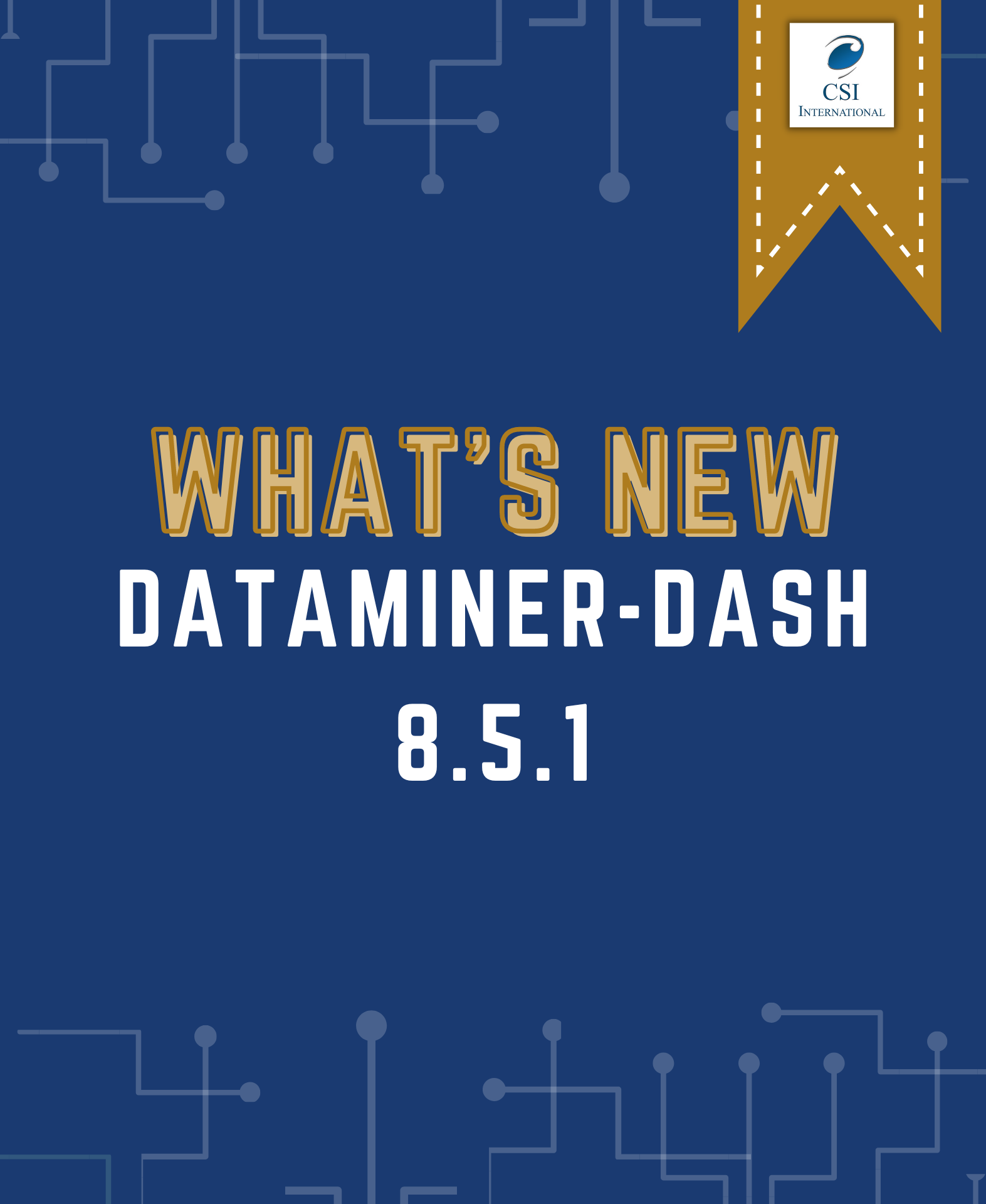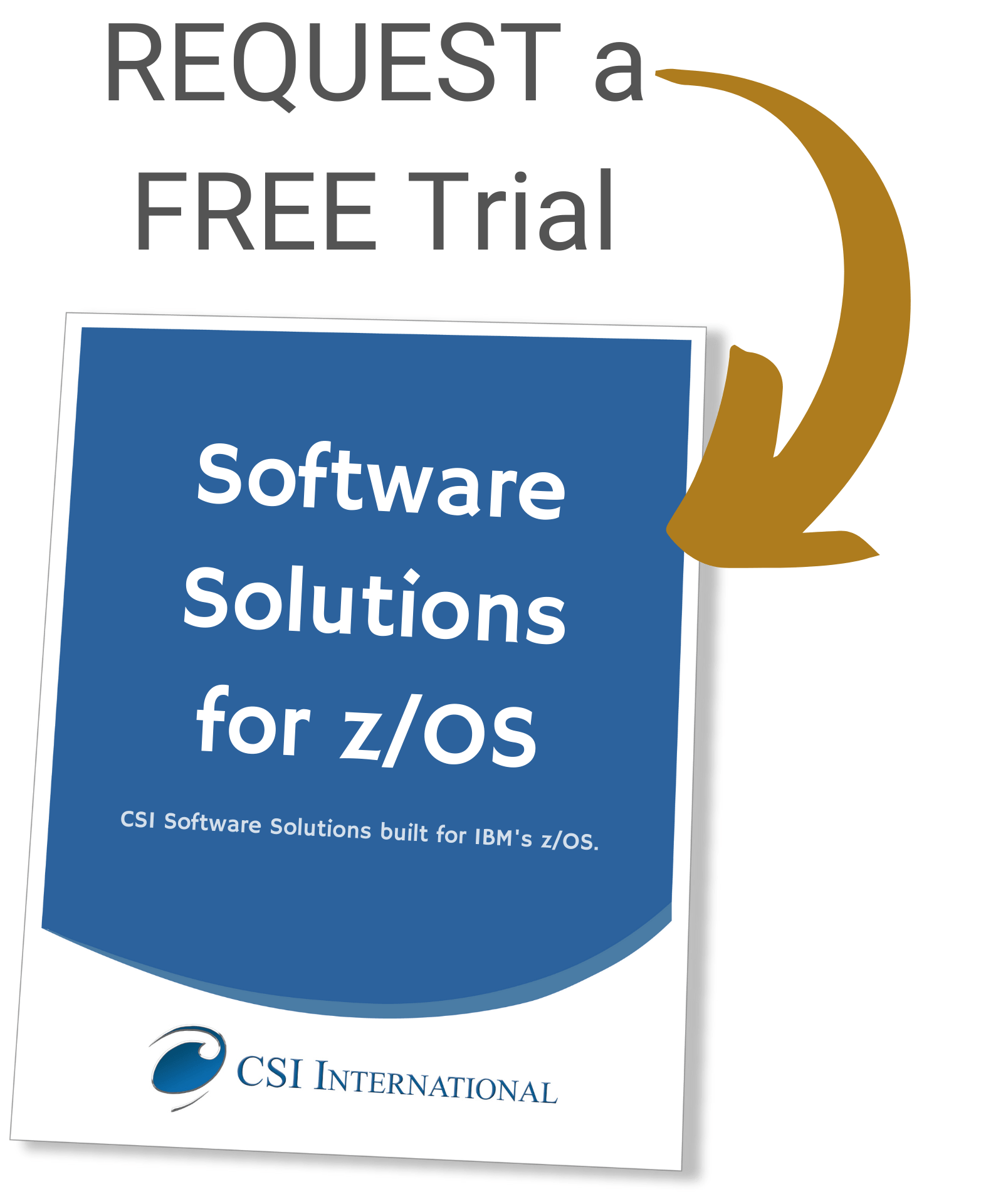Data Management
DataMiner-Dash
Comprehensive Information and Data Management System
Platform: z/OS
DataMiner-Dash is the next generation of DataMiner.
DataMiner-Dash has all of the features you've come to love from DataMiner plus it offers newly improved processing speeds and reduced CPU utilization. DataMiner-Dash 8.5 is our Series 2 of performance-related releases.
Runtime and CPU performance gains are accomplished via:
- Generated code is isolated for cache improvements.
- Various fast paths are engineered in the base code.
- Decimal field validation performance is enhanced.
- Various specialized code is now called only when necessary.
- Vector instructions—allow numeric operations to perform better and support extended zoned decimal fields.
DataMiner-Dash is the complete information manager, able to create from the simplest to the most complex reports. All common data-manipulation functions are provided, including the ability to search, sort, print, extract, update, dump, and copy your critical information.
DataMiner-Dash replaces multiple utilities and gives you one simple product to accomplish most of your day-to-day data handling and reporting tasks, saving you time and licensing costs.
Besides its own simple language, DataMiner-Dash also understands Easytrieve® programs. This means you can take your existing Easytrieve programs and run them unmodified with DataMiner-Dash. Or users who are used to Easytrieve can include Easytrieve commands and parameters in their DataMiner-Dash jobs.
DataMiner-Dash can be configured to simulate Broadcom Inc.'s Easytrieve report and display output identically. In this mode, all titles, headings, detail lines, summary lines, and ASA print-control characters in reports appear exactly as if Easytrieve produced the report.
Supported data sources are sequential, VSAM, and IAM files, as well as, IBM's DB2 ® and IMS TM databases.
DataMiner-Dash can access DB2 for reporting, extracting, and updating. Data can be extracted from a DB2 table into a VSAM file or a sequential file. DB2 tables can be populated from VSAM or sequential files.
Dataminer-Dash can access IMS databases using its IMS/DLI interface. You can generate reports, update data, and add data to an IMS database using FILE, RECORD, and other processing statements.
DataMiner-Dash can import and interpret COBOL data definitions. Simply include your copybook(s) and DataMiner-Dash does the rest. No redefining of record layouts is necessary.
DataMiner-Dash is useful for a number of tasks—without requiring extensive programming skills—including
- COPY one file to another
- SORT a file into any order, selecting, skipping, and updating records on the way
- DELETE or INSERT records in a file
- UPDATE records in a file
- EXTRACT parts of records and/or files into a new file
- PRINT a report from a file (automatically formatted or user-formatted)
- DUMP a file or selected records or fields to the printer
- SHOW selected fields on the printer
DataMiner-Dash can change file organization, recording medium, block size, record length, or record content while copying data to a new dataset.
DataMiner-Dash has a simple PRINT command and a more powerful report writer. The PRINT command produces a formatted report that DataMiner-Dash lays out for you. Records can be selected or skipped for printing, so you get a report of just the data you want.
When a more detailed report is desired, the DataMiner-Dash Report Writer is up to the job. It can sort the report into any order you'd like, summarize fields, do control breaks, and print totals.
DataMiner-Dash uses your normal SORT program to sort files into any order you like. Its commands are far more friendly than those of SORT, and you can write pre-sort, post-sort, input, and output routines in DataMiner-Dash so that your file sorts become easier to maintain and understand.
DataMiner-Dash CICS allows you to view and modify records in datasets under CICS control, without writing a program and without bringing CICS down. You can use it to generate VSAM test data, display the contents of specific records, perform full-screen editing functions, and repair damaged datasets
- All VSAM and temporary storage read/write functions are supported under CICS
- Records can be displayed in either alphanumeric or hexadecimal format
- Records can be read by key, and browsed, added, updated, and deleted without any programming knowledge
In addition to normal batch processing, you can use the DataMiner-Dash Script Wizard to create and run DataMiner-Dash command scripts in TSO. With some limitations, it offers a convenient way to quickly process or visually examine sequential and VSAM files, including filtering, extraction, and totalization. It operates just as DataMiner-Dash does in a batch job but without the need to create JCL or submit jobs.
DataMiner-Dash TSO allows you to display and update records in any VSAM dataset to which you are allowed access. It operates like DataMiner-Dash CICS for VSAM datasets that are available in TSO and not enqueued by CICS. Records you access for changes are cached and not re-written until an explicit command is given.
DataMiner-Dash/VE is an easy-to-use, general-purpose application programming interface (API) that simplifies and standardizes access to VSAM datasets. It can be used from most higher-level and 4GL languages such as COBOL, PL/I, NATURAL, and Focus. It provides full VSAM access from your application programs and provides a more powerful, easier, and efficient way of accessing VSAM.
- Works with any language that can call an assembler routine including fourth generation languages (4GL) such as NATURAL and Focus
- Provides a more efficient way of accessing VSAM from programs written in COBOL and PL/I
- Works for CICS programs, bringing new simplicity to the job of the online transaction programmer
- Provides consistent VSAM access across applications and processing environments, and reduces VSAM training needs for your programming staff—VSAM expertise is no longer required to access VSAM files!
Data Sheet
Available Downloads
DataMiner-Dash Downloads
Legacy DataMiner Downloads
Required Components
None
Release: 1.8B
Platform: Microsoft Windows
Optional Components
None
Release: 1.8B
Platform: Microsoft Windows
Bundles
None
Release: 1.8B
Platform: Microsoft Windows
Demo

Major Functions
Some of DataMiner's helpful functions are listed below.








